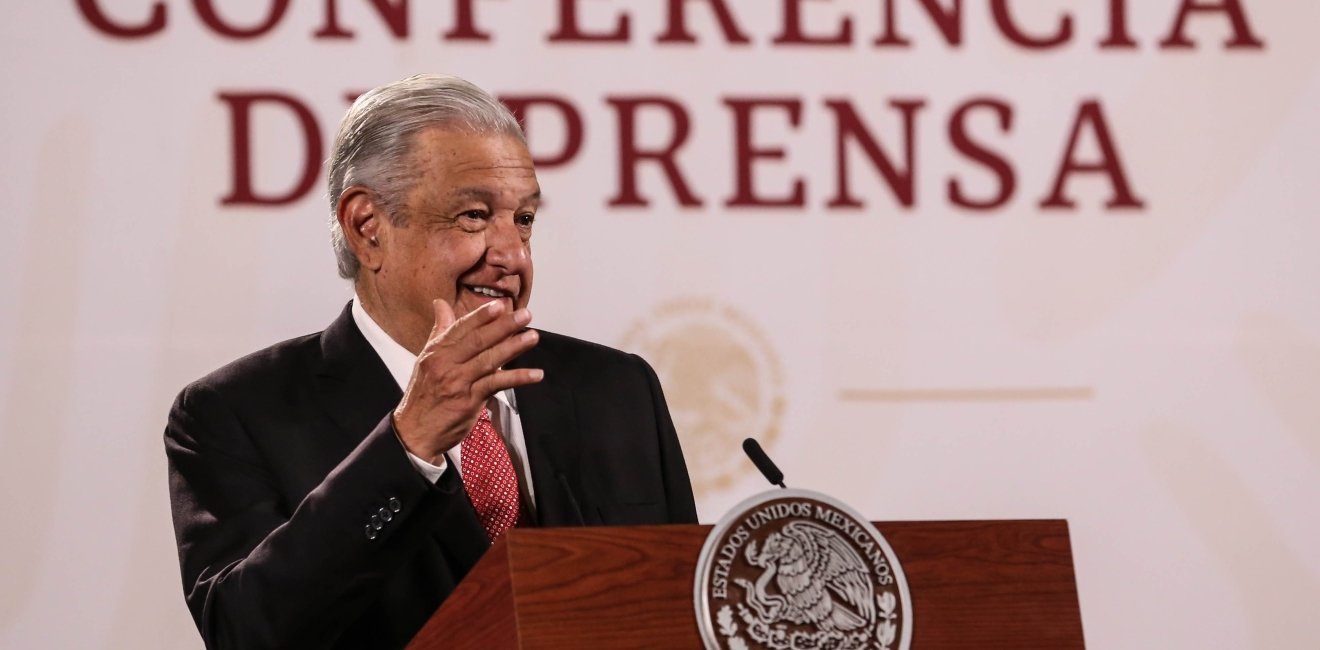On April 22nd, the Mexican Chamber of Deputies approved AMLO's pension reform, with 252 votes in favor and 212 opposing the reform. Three days later, the Mexican Senate passed the reform, with 70 votes in favor and 43 votes against the reform. AMLO has promised that the first payments under the new pension system will begin by June 1st - one day before the elections.
AMLO’s warpath against neoliberalism continues as the June elections approach and his days as president dwindle. The most recent effort entails a significant reform to Mexico’s pension system – one that he hopes to take effect on May 1, on International Workers’ Day.
The proposed reform to Mexico’s pension system aligns with AMLO’s increase in public spending and extension of social programs but carries serious long-term implications. The president’s most well-known, and perhaps most efficacious policy approach has been that of increasing public spending to strengthen the social safety net for Mexico’s most vulnerable populations – groups that have historically been underrepresented and overlooked in the Mexican political sphere. From Jóvenes Construyendo El Futuro (Youth Building the Future) to a basic universal pension, AMLO and his government have raised the stakes in support of these groups, tripling welfare spending from $8 billion at the start of the AMLO administration to $24 billion in 2024. AMLO has doubled down further, promising a 25% increase in social spending for 2024, to total $30 billion during the election year. A coincidence? Probably not.
The support of these historically marginalized groups from the highest levels of Mexico’s government has reaped significant benefits for AMLO himself and his party’s electoral success. Though Morena became an official political party in 2014, the party won Mexico’s highest elected office just four years later with AMLO’s presidential victory in 2018. Five years later, 22 state governments out of Mexico’s 32 states are ruled by Morena. It’s hard to imagine Morena’s skyrocketing success without AMLO’s strategic use of social programming to get out the vote, especially among these underrepresented groups.
AMLO’s first mention of the pension reform occurred in 2020, but it was not formally announced until February 2024, alongside 20 additional reforms varying in terms of scope and significance. The topic of pension reform came to the forefront last week as the Chamber of Deputies Committee on Social Security voted on the proposal.
Put simply, the proposed reform seeks to amend Article 123 of the Mexican Constitution so that workers 65+, who have contributed to the current retirement pension system (which went into effect in 1997), can receive a pension that is equal to the employee’s most recent monthly salary, but no higher than the average monthly salary of an IMSS worker (around $16,777 Mexican pesos or $978 dollars). These pensions are for workers in the formal sector, meaning that they must have some form of social security coverage – either IMSS (Instituto Mexicano del Seguro Social, Mexican Institute of Social Security) or ISSSTE (Instituto de Seguridad y Servicios Sociales de los Trabajadores del Estado, Institute of Security and Social Services for State Employees).[1] Mexico’s retirement savings system has undergone a significant shift in the past 30 years, largely in part due to the reform put forth in 1997 during Ernesto Zedillo’s term as president and into the subsequent presidential term under Felipe Calderón. According to Luisa María Alcalde (Mexico’s Secretary of the Interior), prior to 1997, retirees received a monthly pension equal to their average salary for the past five years before retiring. For example, if a worker averaged a $10,000 peso salary per month, their retirement pension equaled $10,000 pesos monthly. However, presently, with the implementation of the 1997 reforms, someone who earns $10,000 pesos per month will only receive a $2,700-peso monthly pension.
In order to fund this new pension scheme, the AMLO administration has proposed the creation of a new public fund, Fondo de Pensiones del Bienestar (Welfare Pension Fund). The controversy, however, is the source of funding for the new pension fund. These funds will come from accounts that have been untouched for at least three years (no withdraws or deposits), belonging to retirees 70+. These pension funds are currently held in Administradora de Fondos para el Retiro (Retirement Funds Administrator), more commonly referred to as Afore, and total around $40 billion Mexican pesos, equivalent to $2.3 billion USD. According to Alcalde, .4% of these accounts have been untouched for more than 10 years. AMLO did note, however, that protections will be in place so that that workers or dependents who later claim the seized funds will still be able to access them. Fondo de Pensiones del Bienestar will also be funded by money saved by the government by cutting down on expenses, the sale of unused government real estate, as well as the collection of debts. The approval of this reform requires 2/3rds majority vote in both chambers of Congress.
The opposition in Mexico has argued that the transfer of money directly into a new fideicomiso (trust) without judicial approval violates Article 14 of the Constitution. AMLO, however, contends that the current pension system is a monopoly, with ten or so banks serving as the primary administrators of the funds. AMLO went so far as to say that these financial corporations are so powerful that they control Mexican media and are leading campaigns against the implementation of this reform, equating the proposed reform to theft. According to the president, these comments come because the reform would harm the banks themselves, not the pension beneficiaries. The AMLO administration has gone so far as to say that those opposing this reform and creating a “campaign of lies” against it are the same ones who approved the “neoliberal reforms of Zedillo and Calderón.”
The reform was approved in committee on 4/15, with 19 to 10 votes. The legislation was then sent to Mexico’s Chamber of Deputies for a vote two days later when it was discovered that the legislation received differed substantially from the original legislation. For example, the legislation presented last Wednesday stipulated that all individual accounts with Afore could be transferred to the new pension fund – not just those that have been inactive – a significant departure from the original legislation. The AMLO administration has significantly downplayed the error.
It is undeniable that Mexico’s pension system needs updating. Still, the reform must strike a balance “between social responsibility and fiscal sustainability,” account for restrictions in the Mexican economy, and promote a structure that “supports macro stability and financial market development in Mexico.” AMLO is rushing to complete a campaign promise of reforming the pension system without care about the long-term implications and challenges that this reform will pose. According to INEGI, in 2020, there were nearly 10 million people ages 65 and older in Mexico, constituting 7.7% of the country’s population. This number is expected to more than double by 2050 reaching 16.5% - which presents a significant challenge in terms of ensuring retirement pensions, especially given the proposed reform.
AMLO’s priority seems to be on the short-term benefit - increasing the pension for the retirement age population in the formal sector and thus securing their vote in the upcoming elections, without care that this population is growing substantially and maintaining the pension amount, particularly when economic growth under the AMLO administration has been minimal (around .09% annual growth), is setting up future generations of retirees for failure. The proposed reform is rushed, with some analysts arguing that it is a final push to ensure Morena’s victory come June. But, perhaps the real reason for the rush is to limit public discussion and scrutiny. Only a few weeks remain to determine the success of AMLO’s most recent effort at dismantling the neoliberal reforms of his predecessors and the months ahead will reveal the consequences left in its wake.
[1] It’s important to note that only workers in the formal economy are eligible to receive pension funds, excluding a significant swath of Mexico’s population. According to INEGI, in Q2 of 2022, the informal employment rate in Mexico hovered around 52% in 2022. However, in states in south and southeast Mexico, the rates of informality are substantially higher than the national average, such as in Oaxaca (73.7%), Guerrero (73.2%), and Tlaxcala (69.8%).
Author


Mexico Institute
The Mexico Institute seeks to improve understanding, communication, and cooperation between Mexico and the United States by promoting original research, encouraging public discussion, and proposing policy options for enhancing the bilateral relationship. A binational Advisory Board, chaired by Luis Téllez and Earl Anthony Wayne, oversees the work of the Mexico Institute. Read more

Explore More
Browse Insights & Analysis
The Future of France's Far-Right Party

Ukrainian Issue in Polish Elections

Canada's 2025 Election: A Referendum on US-Canadian Relations



